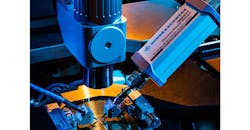This primer outlines the basics of RF power sensors and highlights a few key characteristics that will help you select the best one for each application. The narrative has three parts. First, we focus on choosing the right type of sensor: multipath, wideband, average power and thermal can satisfy slightly different measurement needs. The second section covers the five major attributes of sensor performance, and what to look for relative to your requirements. Finally, we outline three ways to integrate a sensor into your measurement application.
This content is sponsored by:

